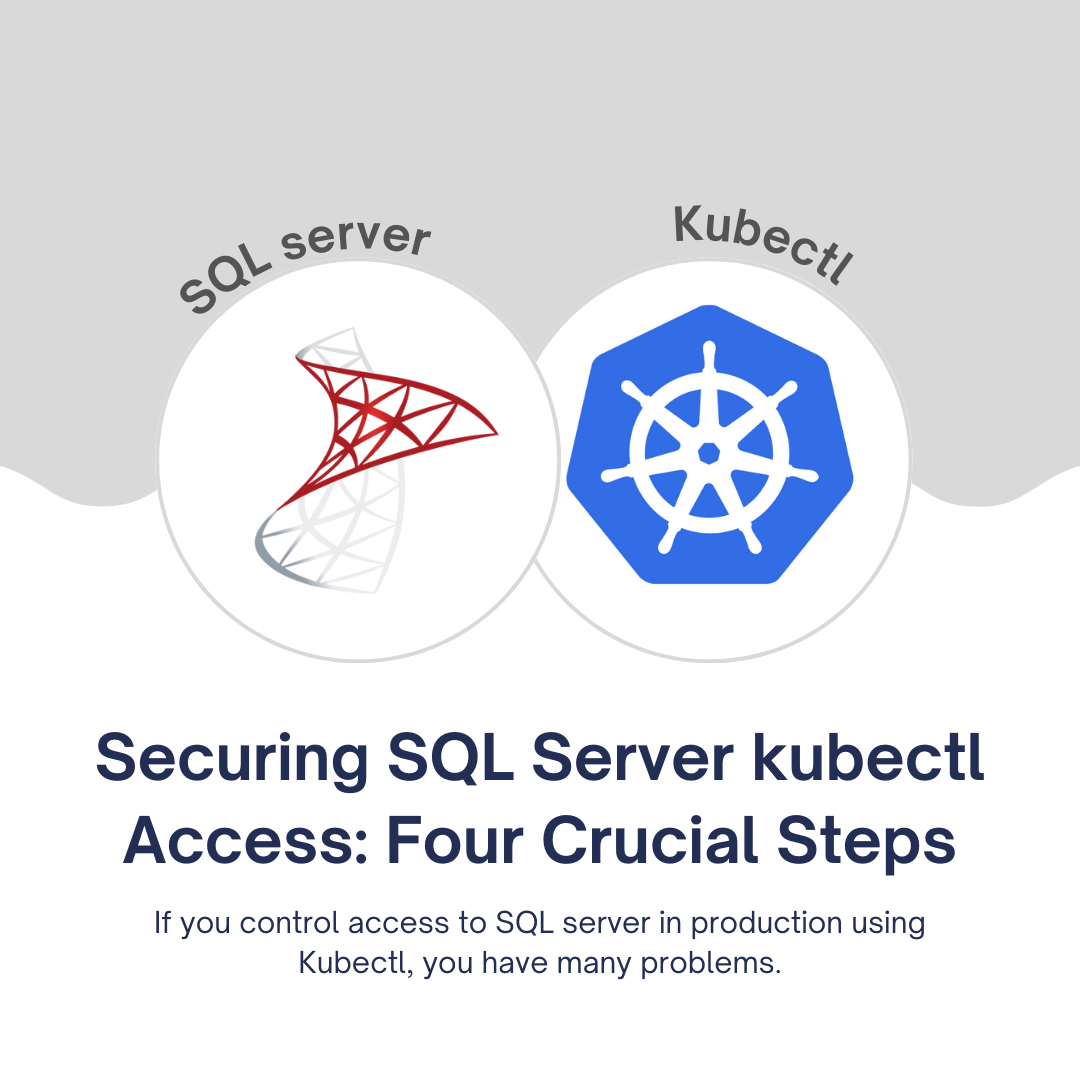Securing SQL Server kubectl Access: Four Crucial Steps

If you manage access to SQL Server in a production environment using kubectl, you're likely facing a range of challenges. In this article, we'll delve into the five most significant issues associated with this practice, discuss their potential impacts, and explore actionable steps to mitigate these problems. Fast and secure access to SQL Server is vital for maintaining product speed, enabling effective troubleshooting, addressing bugs, and resolving incidents efficiently. Unfortunately, many teams employ suboptimal solutions for granting access, which can introduce significant security risks and hinder workflow efficiency. Establishing infrastructure for SQL Server access through kubectl can be a complex and challenging endeavor, but it is indispensable for maintaining a robust and secure database environment. Here are the four key steps to address the hidden vulnerabilities of SQL Server kubectl access:
1. Identifying the Hidden Vulnerabilities
Before we can effectively address the issues related to SQL Server kubectl access, it's essential to comprehend the hidden vulnerabilities associated with this approach. These vulnerabilities are often overlooked but represent significant attack vectors that can compromise the security and efficiency of your database environment. These hidden vulnerabilities encompass:
a. Lack of Single Sign-on & Multi-Factor Authentication (MFA)
The absence of proper Single Sign-on (SSO) and Multi-Factor Authentication (MFA) mechanisms leaves your SQL Server access susceptible to unauthorized entry. Implementing these security measures is critical for safeguarding your systems and data.
b. Absence of Audit Trials and PII Protection
Effective access management necessitates comprehensive audit trails and the safeguarding of Personally Identifiable Information (PII). Neglecting these features can lead to compliance issues and data breaches.
c. Non-compliance with Industry Standards (GDPR, PCI, SOC2, HIPAA)
Different industries have specific compliance requirements, and non-compliance can result in legal ramifications and damage to your organization's reputation.
d. Suboptimal Developer Experience
A subpar developer experience can disrupt productivity and create frustration among your engineering team. Addressing this aspect is crucial for maintaining a smooth workflow.
2. Implementing Gradual Improvements
To address these vulnerabilities, it's advisable to adopt the 80/20 rule and gradually introduce necessary features. Start by integrating the following improvements:
a. Incorporate SQL Server into Existing Systems
If you already utilize tools like Google Workspaces, there's no need for an additional LDAP directory. Integrating SQL Server with your existing systems streamlines access management.
b. Integrate Single Sign-on (SSO) and Multi-Factor Authentication (MFA)
Implementing SSO for SSH and finding tools that facilitate recording SQL Server sessions can enhance security without introducing unnecessary complexity. Consider utilizing Cloud Shell solutions from AWS/Google Cloud or platforms like Runops for these purposes. Avoid making SSO a massive project; instead, integrate what you can with Google OAuth for a streamlined approach.
c. Prioritize Features Based on Industry Needs
Determine which SQL Server access features are most relevant to your industry and focus on those that align with your specific requirements. For instance:
- Developer-Centric Industries: Emphasize improving Developer Experience, SSO, and MFA to streamline access.
- Highly Regulated Industries (e.g., Fintech): Prioritize compliance features such as audit trails, PII protection, and GDPR/PCI/SOC2/HIPAA compliance.
d. Simplify Access Management Across Multiple Tools
To reduce complexity, consider adopting tools that can manage various access points, not just SQL Server. This approach simplifies access management by consolidating multiple access needs into a single tool.
3. Introducing Friction to Undesirable Access Methods
While adding friction to undesirable access methods may not be the ideal solution, it can help guide users toward more secure and compliant practices. Consider implementing the following strategies:
- Form Submissions: If the fastest access method lacks security or compliance features, incentivize the ideal method by introducing a form submission step. This additional step adds complexity and discourages users from taking the less secure route.
- Jira Requests: For example, if engineers tend to change configurations via the AWS web console instead of following automated Infrastructure as Code (IaC) pipelines, make console access more challenging by requiring Jira requests. This doesn't necessarily revoke access but encourages teams to opt for the preferred, automated approach over time.
4. Making the Right Way the Easiest
Ultimately, the goal is to make the most secure and compliant access method the easiest for your team to adopt. By gradually improving access management, prioritizing the right features, and leveraging comprehensive tools, you can ensure that your SQL Server kubectl access is both efficient and secure. While adding complexity to less secure methods may be necessary in the short term, the long-term focus should be on delivering a superior experience that encourages best practices.
In conclusion, addressing the hidden vulnerabilities of SQL Server kubectl access is crucial for maintaining the security, compliance, and efficiency of your database environment. By following these four steps and adopting a strategic approach, you can mitigate risks, streamline access management, and ensure that your team has the tools they need to work effectively in a secure environment
